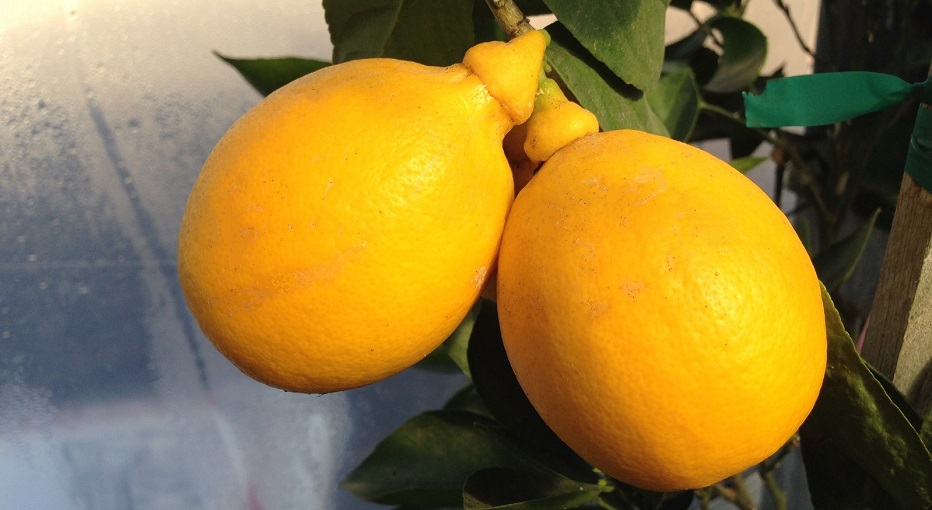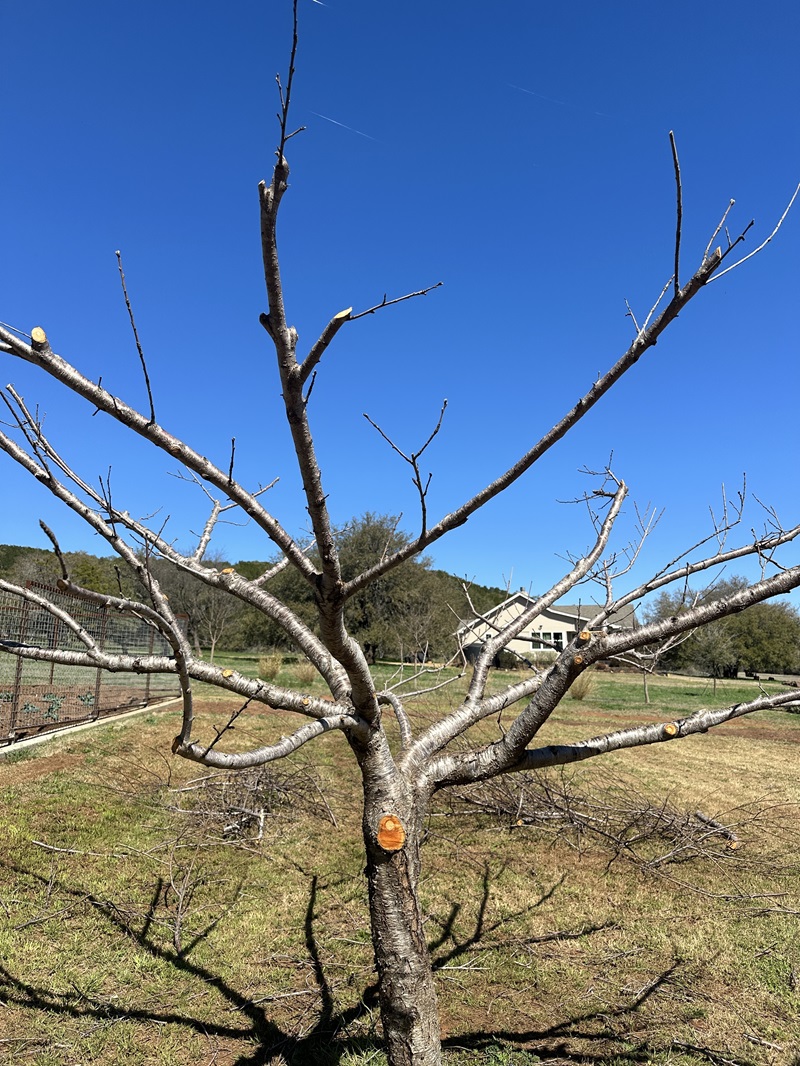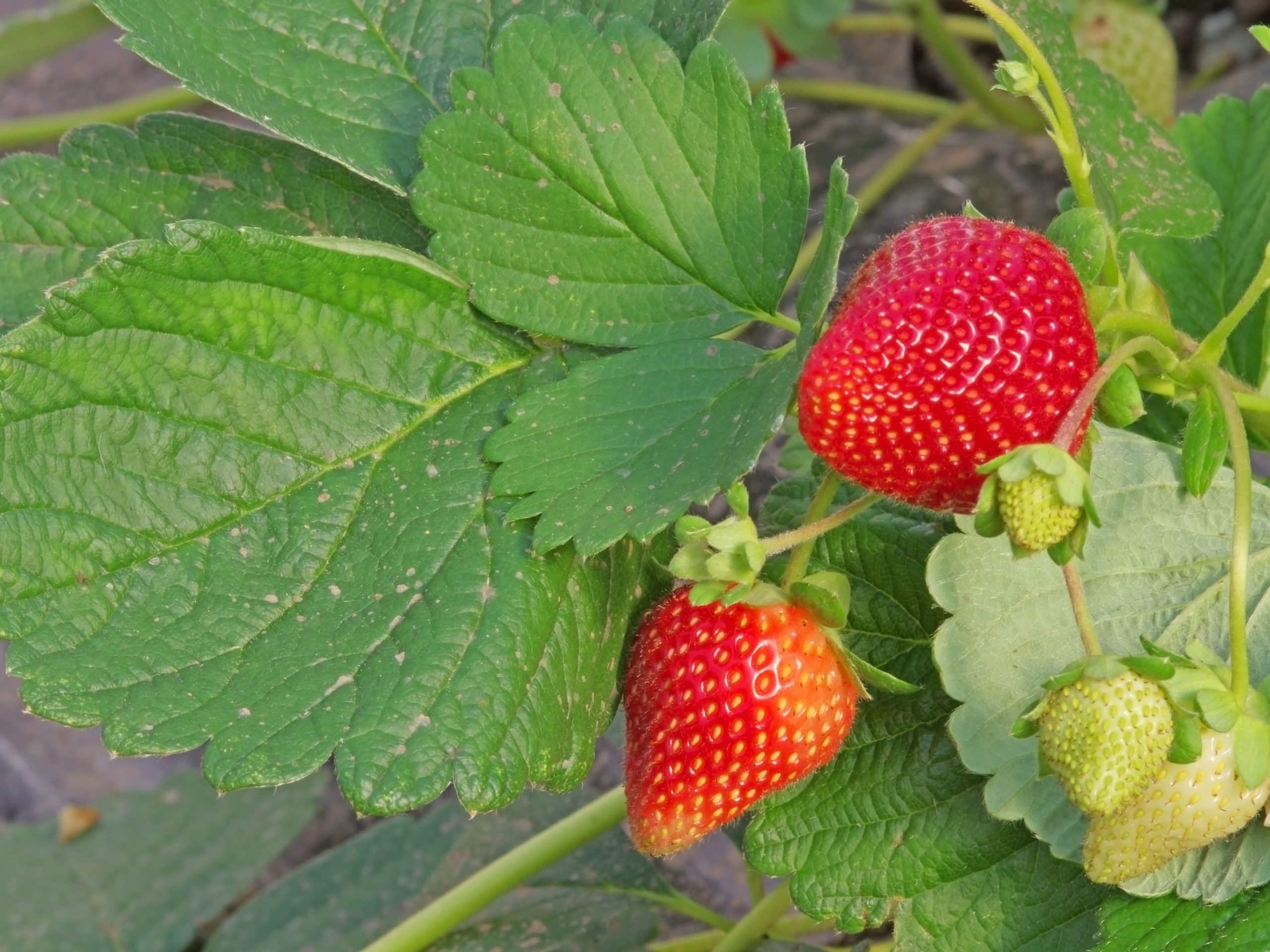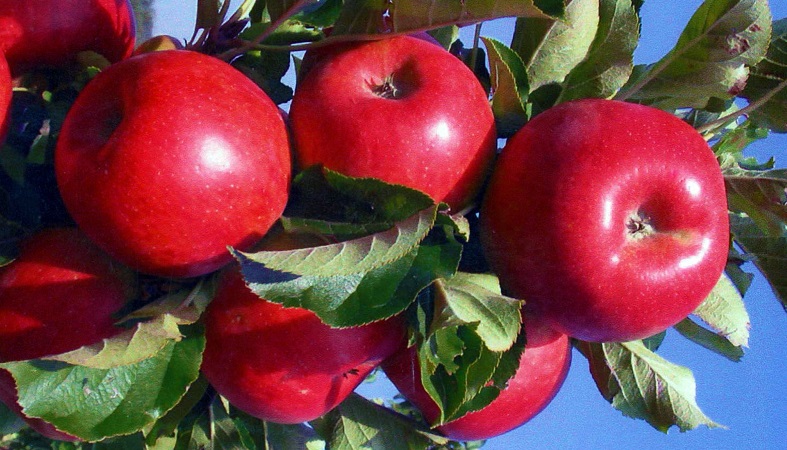There is nothing better than the smell of citrus blossoms in late winter and early spring. The popularity of citrus has increased as many homeowners are creating urban backyard orchards in Central Texas. Commercial citrus operations are typically found in the Lower Rio Grande Valley where the threat of hard freezes is lessened. In fact, Texas is ranked 3rd in US citrus production. You can have citrus in our area as long as you choose the right variety, put it in the right place, and pay a little attention to their care and maintenance requirements.
Citrus Root Stocks
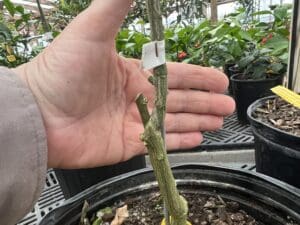
Most citrus are “budded” (grafted) onto a cold hardy sour orange or trifoliate orange (Poncirus) rootstock. Most citrus will bloom anywhere from late fall to early spring, and occasionally you will still have ripening fruit on the plant as it is blooming and setting fruit for the next year. Grafted plants require additional protection if planted in the ground in Central Texas, as the trunk requires protection far above the graft union so the tree will grow back from the grafted wood, not the root stock, if the tree freezes back.
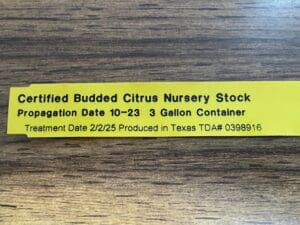
‘Carrizo’ rootstocks are a trifoliate orange rootstock cross which gives trees a little faster growth rate and also causes them to get a little taller. Occasionally you will find citrus grafted on a ‘flying dragon’ root stock, which is a dwarfing root stock. Plants grown on these root stocks will maintain a smaller size with full-size fruit, and are well suited to growing in containers. They are most often grown as a single trunk “tree form” plant in 3 gallon pots. You can always check the Certified Nursery Stock tag to determine if the plant is “budded” or “cutting grown”.

“Cutting” grown citrus are grown from rooted cuttings, so they will be growing on their “own” rootstocks. They are usually grown in a “bush” form in 1 gallon and 3 gallon pots. Having a plant with its own rootstock is an advantage if you are planning to plant your citrus in the ground rather than pots. If the plant freezes back it will come back “true to type” no matter how far back it freezes, unlike grafted plants which must come back above the graft to be true.
Growing Citrus in Pots in Central Texas
Citrus grow quite well in pots as long as their needs are met. They may be moved to a protected location for a freeze, which is a bonus if they have fruit on them that has not been harvested yet, as citrus does not ripen off the tree.
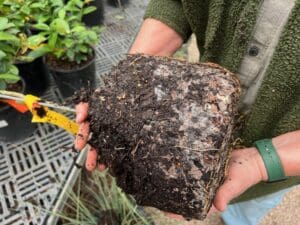 Do not “overpot” your citrus tree. Most varieties of citrus can grow large and produce a good crop when grown in a reasonably-sized pot. Look at the root system of your plant before you make the decision to repot. Many times the root system will be able to live in the same size pot for 2 years or more. When your tree is sufficiently rooted to justify repotting, a 6 inch jump in pot size should suffice.
Do not “overpot” your citrus tree. Most varieties of citrus can grow large and produce a good crop when grown in a reasonably-sized pot. Look at the root system of your plant before you make the decision to repot. Many times the root system will be able to live in the same size pot for 2 years or more. When your tree is sufficiently rooted to justify repotting, a 6 inch jump in pot size should suffice.
(Note the light rooting of this plant and the white mycelia of mycorrhizal fungi on this root system.)
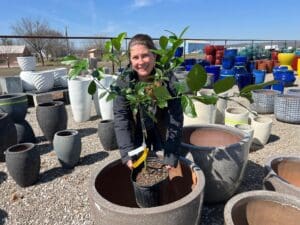
Do not make the mistake of planting a three gallon tree into a giant pot thinking that it will “grow into” the pot. This practice brings up a lot of red flags. With all the excess soil with no roots growing in it, the moisture relations will be difficult to maintain. The root system in the middle of the pot will dry faster than the excess soil that has no roots drawing moisture from it. Moving a huge, heavy pot indoors for a freeze is another drawback.
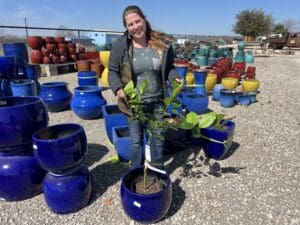
My recommendation is to always “double-pot” your citrus trees. Grow the tree in a plastic nursery pot and set it down into your decorative pot. It will be easier to transplant when the time is right, and MUCH easier to move indoors for a freeze. Anyone who has tried to transplant from a ceramic pot or has had to move a heavy ceramic pot indoors for a freeze will understand. Your local nursery should have used plastic pots for you when it is time to transplant your citrus into the next size pot.
Transplanting citrus in pots
When it is time to move your citrus to a larger pot, do not go more than 4”-6” larger each time you re-pot. Do not pick the tree up by the trunk to get it out of the pot. Turn the pot on its side and gently ease the root ball out of the pot. Handle it by the root ball only, and plant it at the exact same depth that it was planted in in the original pot. As I mentioned, I prefer to plant my citrus in the plastic nursery pots, then “double pot” them into my decorative pot. This makes it much more manageable to move indoors in the winter, and to transplant when needed.
Watering citrus in pots
Citrus pots must have drainage holes and be free to drain without sitting in water. The advantage to growing citrus in plastic pots is that you can lift the pot to feel how heavy it is to determine if the soil is dry. In general, if the pot is half as heavy as it is right after you water it, it is probably time to water again. Alternatively you may feel the soil with your finger and when the soil is dry 3″-4″ down it it probably time to water.
Fill the reservoir in the top of the pot over and over again, allowing the excess to drain freely from the drainage holes. Watch for bubbles on the top or at the drainage holes, as this means you are displacing air pockets in dry soil and you need to continue watering. Remember, water may pass quickly through really dry soil as the soil has components that repel water until they are saturated. Just because the water goes through the pot and out the drainage holes does not mean the soil had adequate water retained in it. Feel the weight of the pot after watering to be certain there is good water retention.
Light Requirements
Citrus in pots will tolerate full sun early in the season but will usually do better if moved to afternoon shade for the hot summer months. Citrus planted in the ground will hopefully be in a southeast location and should receive at least 6-8 hours or more of sun daily.
Location is critical for in-ground planting
There are some citrus varieties that can be planted in the ground in Central Texas, as long as you are prepared for them to freeze back in a hard freeze. Our weather in Central Texas is wild, as you know. I have known citrus trees that have survived for 10-15 years in the ground in a protected “microclimate” before we had a freeze that they did not survive. Remember, location, location, location!
The more cold-hardy citrus such as Satsuma mandarin oranges, kumquats, tangerines, calamondin oranges and some mandarins are the best candidates for planting in the ground in Central Texas. Limes and other citrus varieties are generally too cold tender to consider growing in anything but a pot in Central Texas, although Improved Meyer Lemon grown from cuttings may be successful in some instances. There is an advantage of having a citrus tree on its “own” rootstock, grown from cuttings rather than “budded” (grafted) onto a different variety. If a plant grown from cuttings freezes back hard it will come back “true to type”. Grafted varieties will need to be protected above the graft to ensure that the tree returns “true to type”.
Planting the cold hardy varieties in the ground will be more successful if you have a good “microclimate”, such as a protected area at the south or southeast side of your house to provide shelter from the cold Northwestern wind brought by cold fronts. The house will also provide a little bit of heat to keep it warmer during the winter. Citrus do best in deep, well-drained soil with a good organic compost worked into the soil 8″-10″ deep several feet out from the plant. Always plant your citrus tree at the exact depth that it was in the pot. Plant the tree at least 4-6 feet away from the structure to allow for future growth. Prepare to take measures to protect it in case of a severe long-term freeze, and realize that some years it may freeze back to the ground.
One of the best ways to protect citrus growing in the ground is by “banking” the trunk with soil. Mound a loose, medium-textured topsoil to about 15″ up on the trunk, or at least 6″ above the graft. The soil should make contact with bare soil, not mulch or grass, for the best thermal transfer of heat. Do not use mulch or compost as it is not as good at capturing heat as the bare soil. Banking can protect the graft from temperatures as low as 12° to 15°F. If soil must remain on the trunk for an extended period, spraying the trunk with a copper fungicide will help prevent disease.
I have found that there are urban microclimates in the City of Austin that will support planting citrus and tropical plants in the ground, and there are areas in San Antonio and southward that are more conducive to planting citrus in the ground. We even see Bougainvillea come back in these areas. Areas near bodies of water are also known to create microclimates. If you think you have a protected location, give it a try.
Pruning
Very little pruning is necessary on citrus trees. Only prune your citrus trees to control tree size or to remove dead, diseased, or damaged wood. Water sprouts, the aggressively growing upright shoots, should be removed as they typically do not bear well. All sucker growth should also be removed.
Fertilization
Fertilizer gives your citrus nutrients that will help the plant produce carbohydrates for root, fruit and leaf development. DO NOT FERTILIZE UNHEALTHY PLANTS! Plants that are not growing readily likely have loss of root system and cannot uptake the nutrients. Fertilizer will not make your plants healthy, and may cause more harm than good when applied to an unhealthy plant.
Fertilize your citrus trees three times a year with a complete fertilizer such as Happy Frog Citrus and Avocado fertilizer or MicroLife Citrus fertilizer. If your fertilizer does not contain magnesium you can mix one tsp. of magnesium sulfate in a gallon of water and drench roots when fertilizing. Make the first application when new growth appears, the next when fruit begins to develop, and once again when fruit begins to change color.
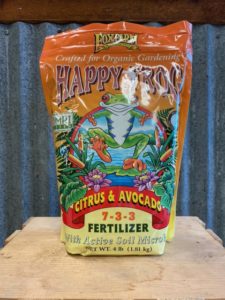
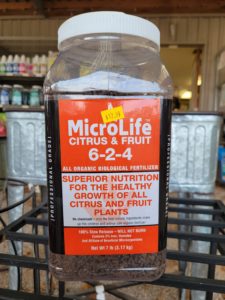
Harvesting
Fruit is best left on the tree until ripened. The only way to truly know if a fruit is ripe is to actually taste it. Begin harvesting from the bottom of the plant, as these fruits will be more prone to soil splashing pathogens onto them, and should be removed first. Fruit will generally become sweeter the longer it remains on the tree, and harvest may take place over a couple of months. Do not leave fruit on so long that it becomes “light” in weight, as that indicates moisture loss and deterioration of the fruit. Watch our video HERE to learn more.
Troubleshooting
Please see our blog on Troubleshooting Citrus HERE

Caterpillars may consume leaves of your citrus plant. They start at the outside of the leaf and can strip a small citrus tree fairly fast. The most common one is called an Orange Dog and it is the larvae of the Giant Swallowtail butterfly. We do not usually recommend controlling these caterpillars as they produce an important pollinator. “Orange Dog” refers to the orange “horns”, or osmeterium, that the caterpillar displays when startled. The larvae look like “bird poop” which is likely a defense to protect them from predators. You can read more about them HERE
Varieties

Oranges and Grapefruit: True oranges (not Satsuma oranges) and grapefruit are not cold tolerant in our Central Texas climate. There may be some varieties that have a greater cold resistance than others, but unless you have a warm microclimate to protect them from hard freezes, they will most likely not survive in the ground here. Keep them in pots and move in for any freeze.
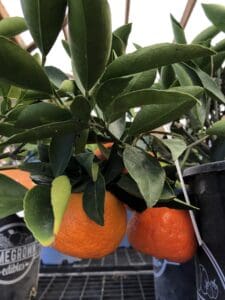
Satsuma Oranges: ‘Artic Frost’ Satsuma oranges are considered to be more cold tolerant than most Satsumas, and will take temperatures down to 25 degrees or lower. These happen to be my favorite. There are many other varieties that ripen early enough to avoid freezing weather. You can grow several different varieties which ripen at different times in the fall to winter, which spreads the harvest season out longer.
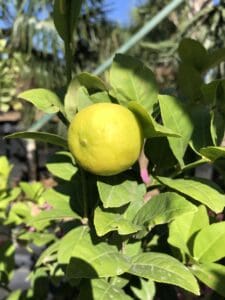
Lemons: The best lemon variety for our area is the ‘Improved Meyer Lemon’. It is thought to not be a true lemon but actually a cross between a lemon and a satsuma orange. Meyer lemons differ from most citrus in that they continue to flower and fruit throughout the growing season, and may have fruit ripening at different times. These plants are labeled ”Improved Meyer Lemon” as well, and this simply means that it is a Meyer Lemon that has been “cleaned” of any viruses the original Meyer Lemon may have had. All Meyer Lemons grown now are the “Improved” variety. These are available in both “cutting grown” and “budded” plants.
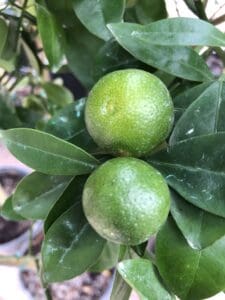
Mexican Limes: Mexican limes are great for our area. There is also a ‘Thornless Mexican Lime’ that also does well here. These are also known as Key Limes. We must grow these in pots, as they are not at all cold hardy here.
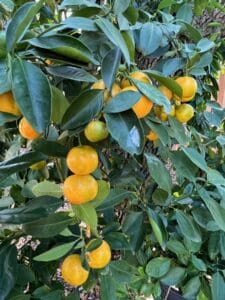
Calamondin Oranges: These small oranges are full of seeds and a bit sour, but tend to be fairly cold tolerant. They are usually cutting grown so they will come back true from a freeze.

